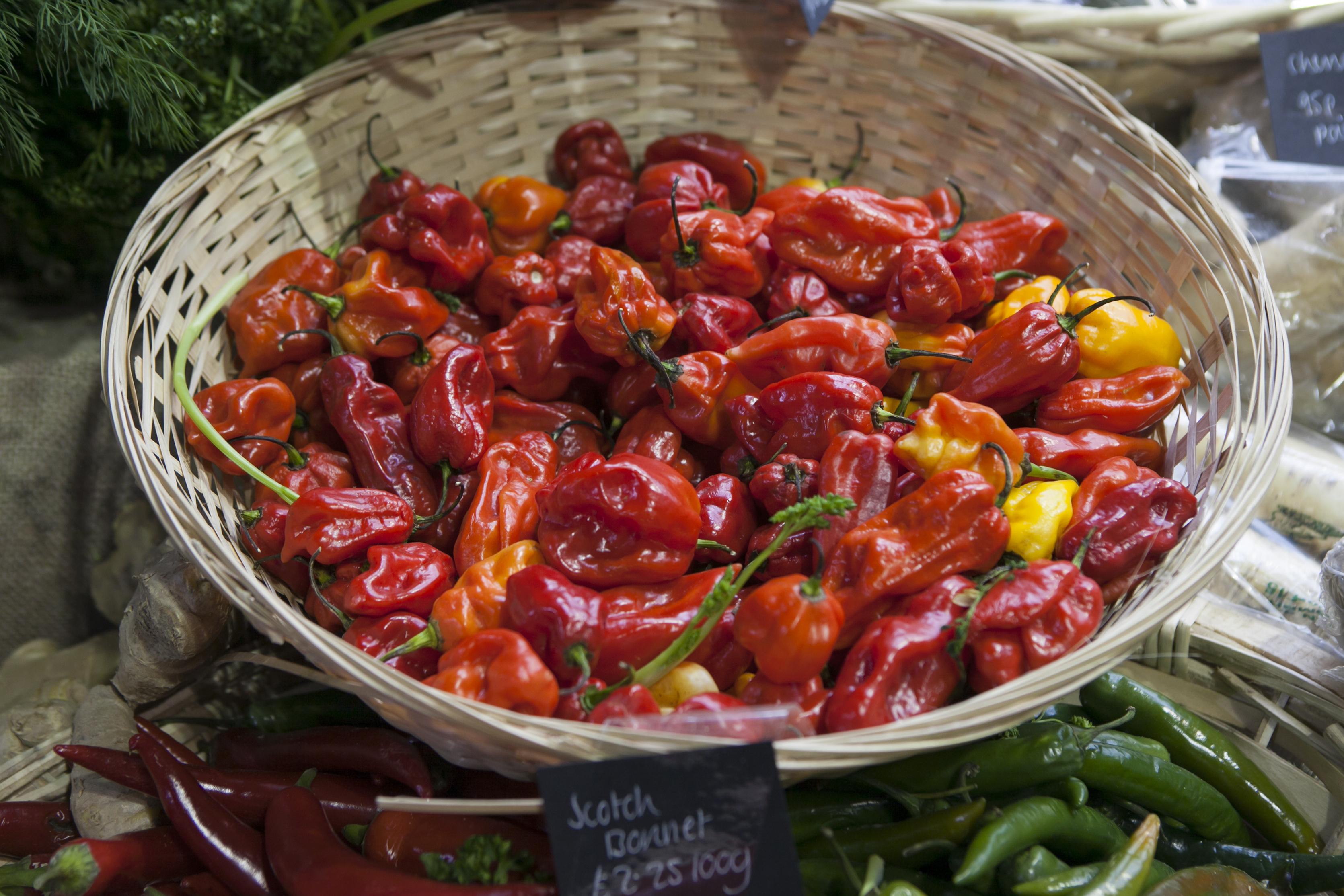How to Handle Hot Chillies8 August 2019 Believe it or not, it's actually possible for a chilli to burn through rubber gloves. We're not talking about your average jalepeno here, more specially developed peppers that are hundreds of thousands of times as strong as the peppers you would find in the supermarket. If you're a chilli expert, or if you're looking to grow the world's hottest chilli (the title is up for grabs), then we'd recommend that you get the right gloves first before cutting them in the kitchen. Measuring Chillies!Chillies are hot because of a substance called capsaicin, a chemical that stimulates areas of the skin and tongue. It fools your brain into thinking that your tongue is burning, something which leaves you instantly reaching out for the nearest glass of water. This is the chilli peppers natural defense, by burning its prey the chilli pepper's plant can send out a message not to return.
Humans being humans we see this as a challenge rather than a threat, and in 1912 American pharmacist Wilbur Scoville created something called the Scoville Scale, a system of measurement for rating chillies and their heat. It starts way down below 1,000 for the most non-pungent chillies, and ends at very highly pungent 80,000+ chillies, with the highest chilli ever produced coming in at well over 3,000,000 Scoville's! Why Do You Need Gloves for Chillies?You probably won't need gloves for chillies at the lower end of the scale, although we would recommend some light disposable food use gloves just to prevent contamination. However, as you go up the scale into the thousands you can actually burn your hands and eyes, so we'd recommend donning a protective pair of gloves. Remember, hot chillies have actually put people in hospital, so unless you want to be in a hospital ward with burnt hands then we'd recommend you follow the below guide! Choosing your Chilli Proof Gloves!
Extreme Heat: 750,000 to Scoville Units to 2,200,000 Scoville UnitsAnyone eating anything above 750,000 Scoville Units is just mad, but believe us it does happen, with plenty of chilli eating contests taking place every year. If you're one of the poor souls who is chosen to cut these chillies, we'd recommend buying a box of Black Mamba Disposable Nitrile Gloves and placing each pair over some Chemical-Resistant Gloves. When your hands start to feel warm, you can switch your disposable gloves for a new pair. Chillies: Ghost Pepper, Carikua Reaper, Pepper X. Getting Hot: 100,000 to Scoville Units to 750,000 Scoville UnitsAs we move into the hundreds of thousands, things are starting to get serious. Honestly, we've heard stories of people using thin gloves only for their hands to soon start burning. At this level, we'd recommend Thick Rubber Gloves or Nitrile Gloves that are suitable for use with food. Chillies: Habanero, Scotch Bonnet, Indian Tezpur. A Bit of Kick: 10,000 to Scoville Units to 100,000 Scoville UnitsThings are starting to get a little hotter between these units, so you might want to wear some thicker disposable gloves that pack more of a punch. For this, we'd probably recommend the Black Mamba Disposable Nitrile Gloves, as their tough, double strength nitrile material can withstand a fair amount of heat. Chillies: Serrano, Cayennem Tabasco, Thai Hot Peppers. Mild: 0 to Scoville Units to 10,000 Scoville UnitsChillies between 0 and 10,000 Scoville units are pretty tame. We'd generally recommend a pair of disposable Food Preparation Gloves such as the Aurelia Bold Nitrile Gloves. Chillies this low aren't known for their heat, so you could even cut these without any gloves at all! Chillies: Anaheim, Jalapenos. Prepare Before You CookYou don't want to leave it too late and end up with burning hands while cooking, and you can prevent it now by buying the correct gloves. If you'd like to have a further browse of our collection, we have plenty of food handling gloves on our website. We would recommend that you take a look at either our Rubber Gloves category for those extremely hot gloves, and our Food Preparation Gloves for those of you who like your chillies tame. If you have any questions – or anything to else to add – tell us in the comments below, or find us on Facebook and Twitter! | |










